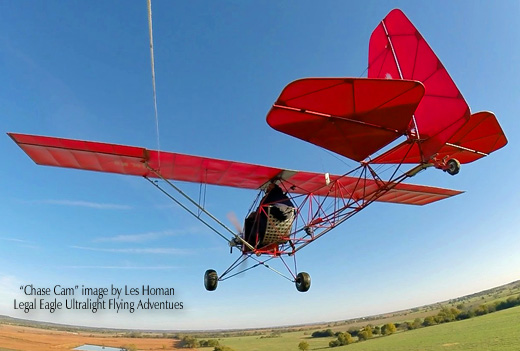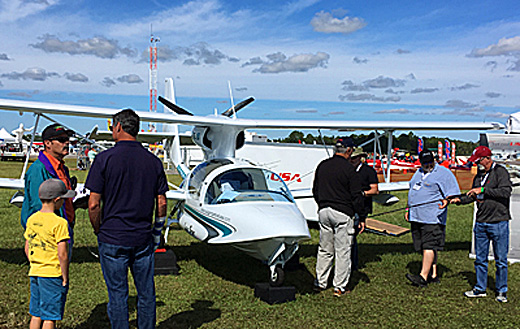
DeLand Showcase 2018 is over, which signals the airshow season is over for this calendar year. At the end, many concluded the show was good for customers and vendors. Pilots placed orders for new aircraft and left with smiles on their faces; I spoke to a few of them. Many of you also said hello during the event; that’s always fun. Despite my positive words, some feel these “regional shows” aren’t as meaningful as the large shows. Is that right or not? It depends on the observer to some extent. I venture to say that if you could evaluate orders placed with cash and create a ratio of those people compared to the number of persons coming in the gate, DeLand (or the other LSA- and light kit- specific shows) would smoke all others. No question the big shows with their thick crowds satisfy the soul of attendees and vendors alike.


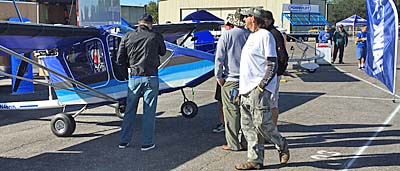

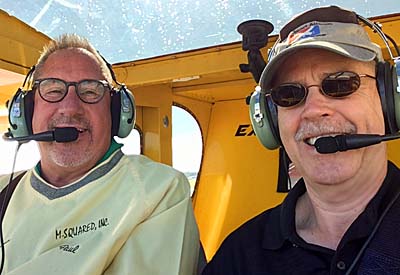
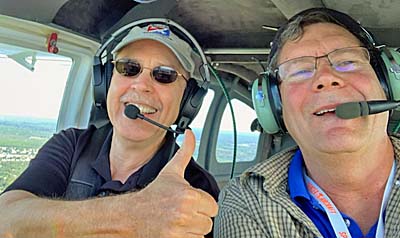

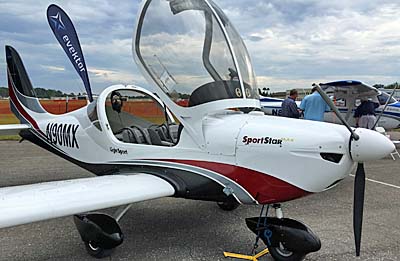
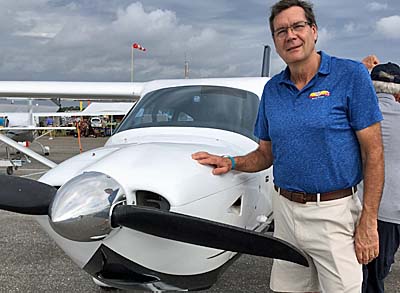
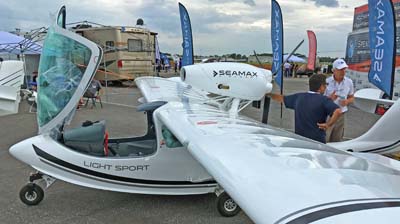 Seamax
Seamax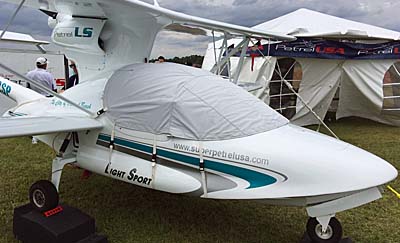 Inside the tent, we did an interview with
Inside the tent, we did an interview with 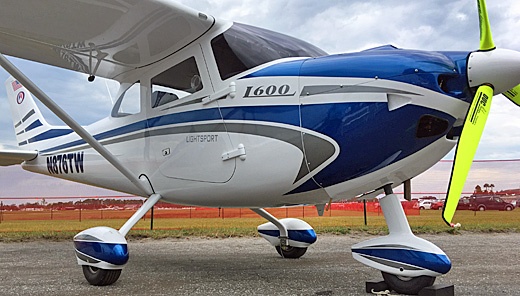
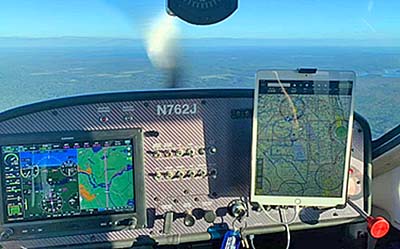
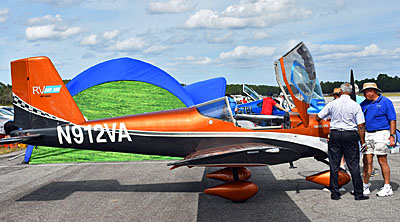
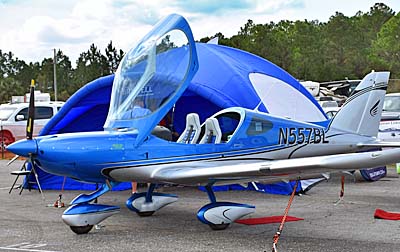
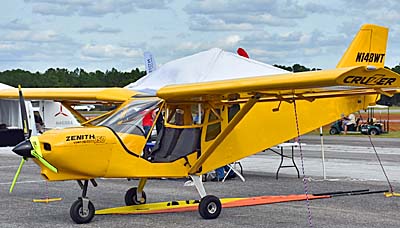
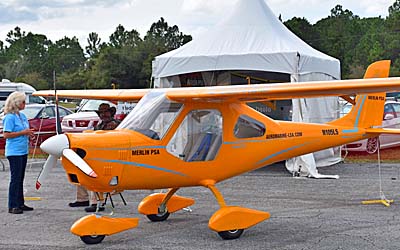
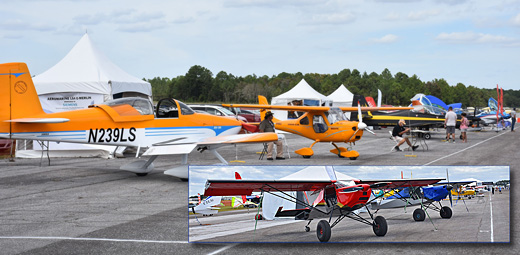
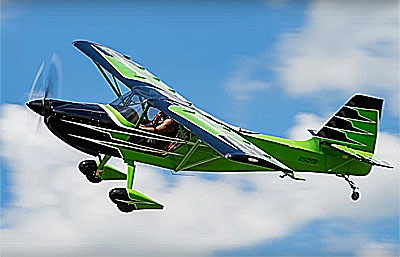 The end of the year is approaching. We just wrapped Halloween and now begin the headlong rush into the holiday season. However, before all that retail excitement starts, here comes the third running of the
The end of the year is approaching. We just wrapped Halloween and now begin the headlong rush into the holiday season. However, before all that retail excitement starts, here comes the third running of the 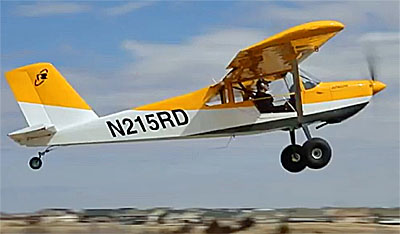 Reason
Reason 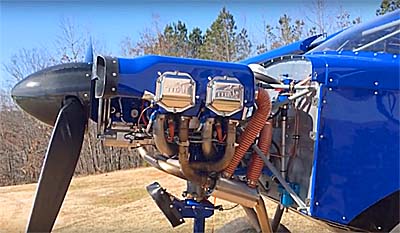 Reason
Reason 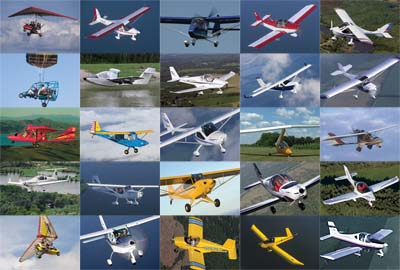 You can probably add a few more reasons of your own, but the key is to show up and enjoy yourself while checking out a good flock of Light-Sport Aircraft, light kit-build aircraft, and ultralights. Inside the display tent you will find a good collection of accessories, tools, and other gear pilots want.
Oh, here's one more reason. Come see
You can probably add a few more reasons of your own, but the key is to show up and enjoy yourself while checking out a good flock of Light-Sport Aircraft, light kit-build aircraft, and ultralights. Inside the display tent you will find a good collection of accessories, tools, and other gear pilots want.
Oh, here's one more reason. Come see 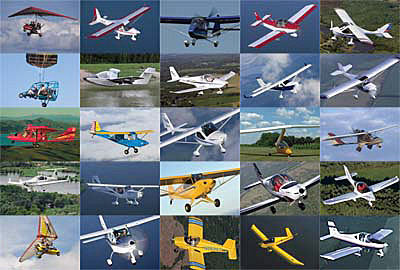
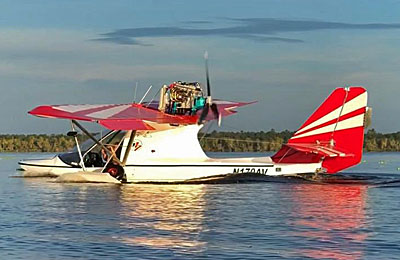 In mere days now,
In mere days now, 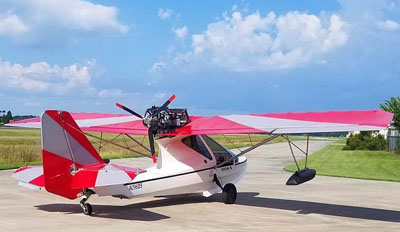
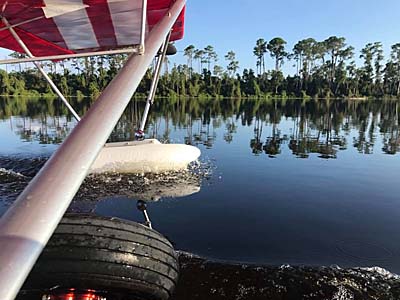 The central Florida airport is home to
The central Florida airport is home to 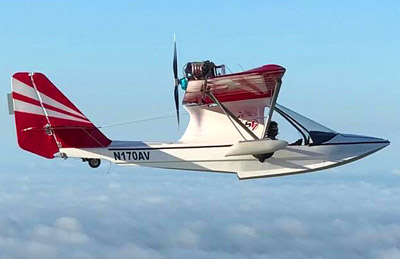 Those with a smaller budget should pay extra attention as the opening price of $25,000 is quite remarkable for a seaplane.
"Yes, that's right, [we're building] a single seater,” they said. “We are in the process of assisting some great Aero family members making one of the most awesome single seat aircraft on the market!" They promised to keep me advised and I'll report more as this emerges. Under leadership from Alex Rolinski, the Florida company has been exhibiting great energy in the pursuit of its enterprise.
Check out the full line of Aventura seaplanes at
Those with a smaller budget should pay extra attention as the opening price of $25,000 is quite remarkable for a seaplane.
"Yes, that's right, [we're building] a single seater,” they said. “We are in the process of assisting some great Aero family members making one of the most awesome single seat aircraft on the market!" They promised to keep me advised and I'll report more as this emerges. Under leadership from Alex Rolinski, the Florida company has been exhibiting great energy in the pursuit of its enterprise.
Check out the full line of Aventura seaplanes at 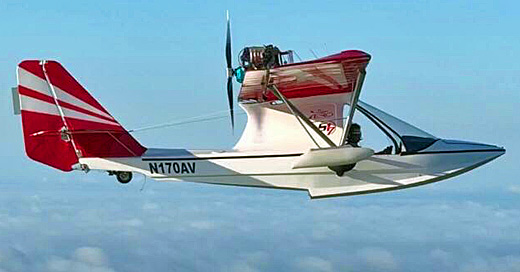
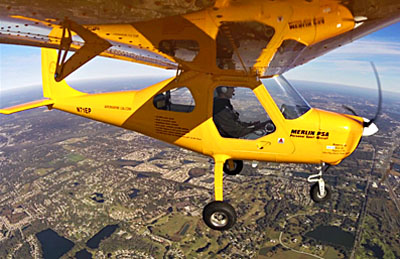
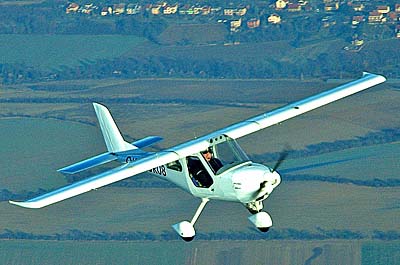 Now think of Merlin's price tag. It can be held to less than $50,000 today even with a four-stroke ASTM-compliant engine that provides an abundance of power for Merlin. That amount is approximately the same as $36,000 in 2002. Using the potent (and also ASTM-compliant)
Now think of Merlin's price tag. It can be held to less than $50,000 today even with a four-stroke ASTM-compliant engine that provides an abundance of power for Merlin. That amount is approximately the same as $36,000 in 2002. Using the potent (and also ASTM-compliant) 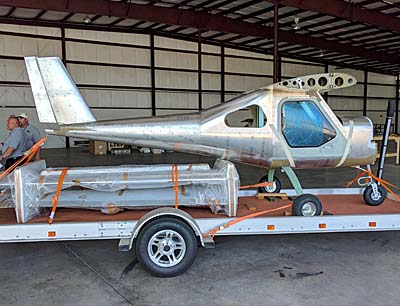
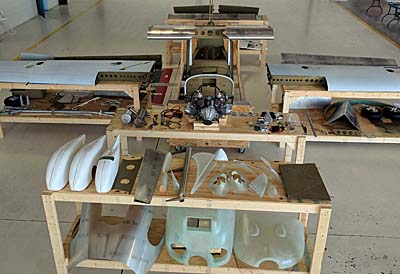 Merlin goes a further step beyond. The holes already have special, colored rivets that hold the parts in place. A builder removes them, does the under-skin work as needed — wiring, linkages, fuel lines — and re-rivets. I watched some of this occur and it is fairly amazing as a process. I might even attempt it and I'm not a builder.
With dedication and especially with some professional assistance as is possible today, a builder can finish the project in as little as two weeks.
Is that work effort worth it, considering you can hold the price below the once-expected price of a LSA? Only you can answer that question but Erwin's
Merlin goes a further step beyond. The holes already have special, colored rivets that hold the parts in place. A builder removes them, does the under-skin work as needed — wiring, linkages, fuel lines — and re-rivets. I watched some of this occur and it is fairly amazing as a process. I might even attempt it and I'm not a builder.
With dedication and especially with some professional assistance as is possible today, a builder can finish the project in as little as two weeks.
Is that work effort worth it, considering you can hold the price below the once-expected price of a LSA? Only you can answer that question but Erwin's 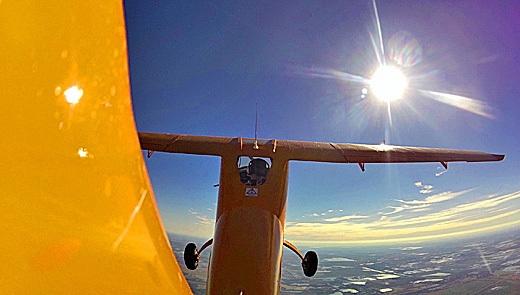
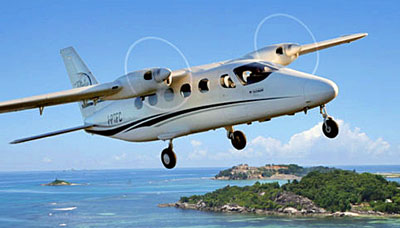 This week kicks off the truly gigantic trade show known by its sponsoring organization's abbreviation:
This week kicks off the truly gigantic trade show known by its sponsoring organization's abbreviation: 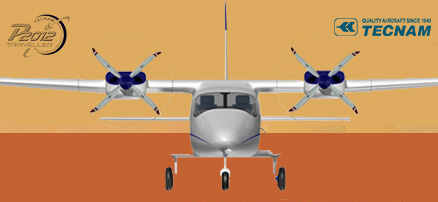 I always find something of interest to the light aviation, recreational flying community. This year, I'm on the lookout for
I always find something of interest to the light aviation, recreational flying community. This year, I'm on the lookout for 

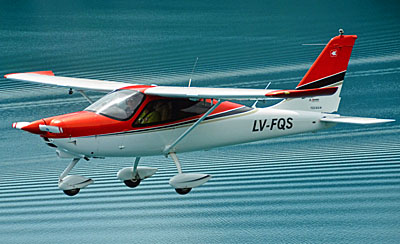


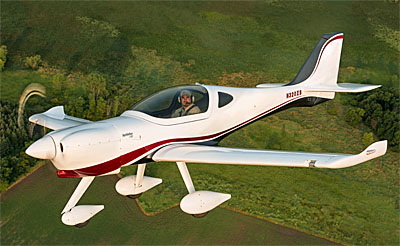
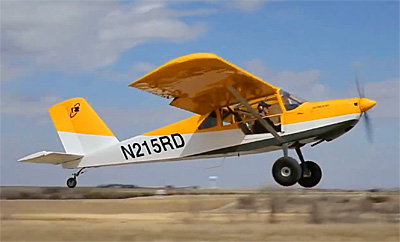
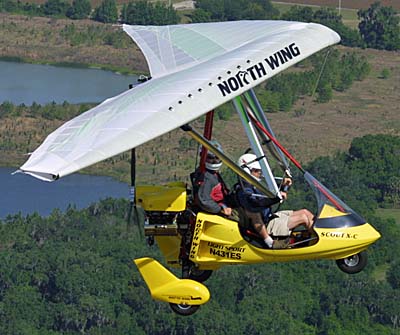
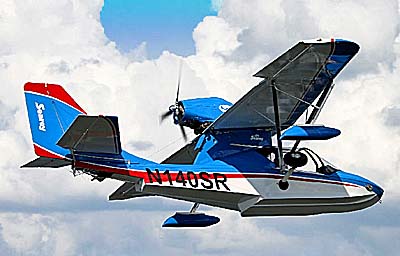
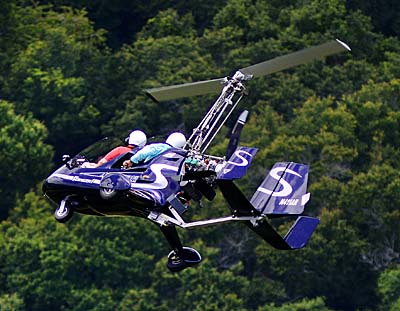
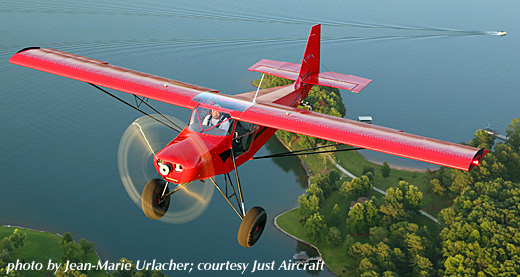
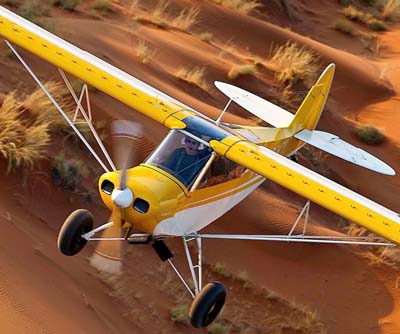 This weekend a firestorm erupted out of the blue. A wave of questions is ringing my phone, piling up text messages, and populating my social media accounts. Because it seems premature, I preferred not to weigh in on LSA weight but given the volume of comments, neither can I remain silent.
In addition, a shockingly near-term timeline for FAA to issue rulemaking further enforces the need to speak out now. I will provide information gleaned just an hour ago.
In case you missed the story, here's what
This weekend a firestorm erupted out of the blue. A wave of questions is ringing my phone, piling up text messages, and populating my social media accounts. Because it seems premature, I preferred not to weigh in on LSA weight but given the volume of comments, neither can I remain silent.
In addition, a shockingly near-term timeline for FAA to issue rulemaking further enforces the need to speak out now. I will provide information gleaned just an hour ago.
In case you missed the story, here's what 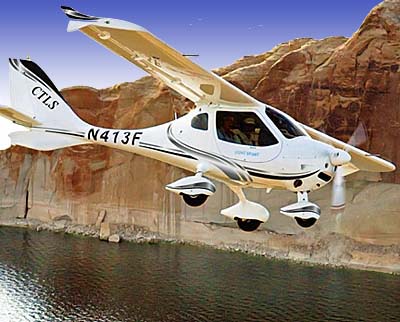 I reached out to contacts in the agency and got a reply even though government is closed for Columbus Day. Here's what I learned from the group tasked with preparing this rule.
First — The announced date of "January 19, 2019" simply cannot happen. The team creating the rule does not possibly have the time to complete work by then. In fact, it is more likely "three to four years away." The new rule is a huge, sweeping effort that touches on many FAR parts; it cannot be completed on such a rushed schedule, nor would doing so be prudent.
Second — An effort is being made to align this major new regulation with the Basic Med rule, meaning that, yes, gross weight may go as high as was stated — and extra seats may be added — but, this is by no means determined yet. It will not even go before FAA's high level rulemaking council for initial determination until December …if then. At this time, "this is just at the discussion stage," reported my contact.
I reached out to contacts in the agency and got a reply even though government is closed for Columbus Day. Here's what I learned from the group tasked with preparing this rule.
First — The announced date of "January 19, 2019" simply cannot happen. The team creating the rule does not possibly have the time to complete work by then. In fact, it is more likely "three to four years away." The new rule is a huge, sweeping effort that touches on many FAR parts; it cannot be completed on such a rushed schedule, nor would doing so be prudent.
Second — An effort is being made to align this major new regulation with the Basic Med rule, meaning that, yes, gross weight may go as high as was stated — and extra seats may be added — but, this is by no means determined yet. It will not even go before FAA's high level rulemaking council for initial determination until December …if then. At this time, "this is just at the discussion stage," reported my contact.
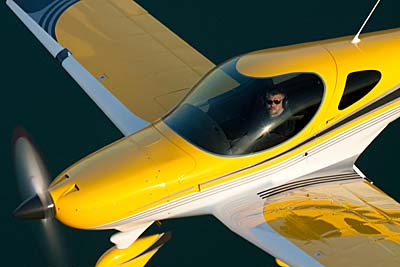 Third — LSA gross weight will rise but "not to a hard number" like 3,600 pounds. It will involve a maximum horsepower, a given stall speed, among other considerations, all of which will rely on the laws of physics to keep the aircraft design reasonable.
In July, in
Third — LSA gross weight will rise but "not to a hard number" like 3,600 pounds. It will involve a maximum horsepower, a given stall speed, among other considerations, all of which will rely on the laws of physics to keep the aircraft design reasonable.
In July, in 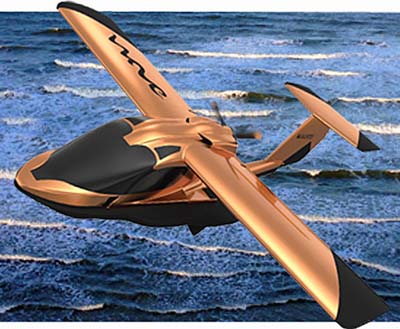 About this weekend's news, one U.S. supplier said, "I’m pretty worried." He's concerned people may hold off a purchase, waiting to see what happens. "I’ve seen it before," he added. However, since the new rule remains years away, no buyer ought to halt the joy of acquiring and flying a new aircraft.
Another industry expert said, "I hate being caught flat-footed like this." He remembered clearly what happened with the early announcement of medical changes.
While all the buzz today may be about gross weight, the light aircraft industry has other concerns about the regulations that
About this weekend's news, one U.S. supplier said, "I’m pretty worried." He's concerned people may hold off a purchase, waiting to see what happens. "I’ve seen it before," he added. However, since the new rule remains years away, no buyer ought to halt the joy of acquiring and flying a new aircraft.
Another industry expert said, "I hate being caught flat-footed like this." He remembered clearly what happened with the early announcement of medical changes.
While all the buzz today may be about gross weight, the light aircraft industry has other concerns about the regulations that 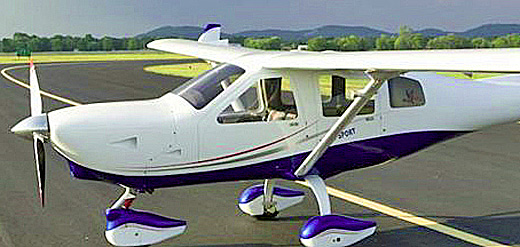
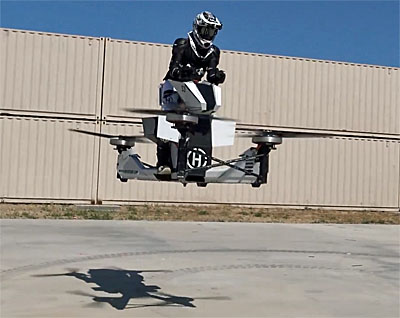 So far, at least three entries
So far, at least three entries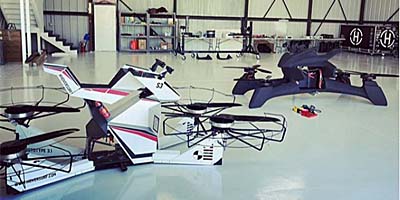 Had Mike written a regulation back then to include multicopters like Scorpion he would surely have been relocated to some remote post where his craziness would not be obvious.
Yet multicopters seems to be everywhere and now, FAA has issued a formal letter saying, basically, "Yeah, it's a Part 103 ultralight."
Had Mike written a regulation back then to include multicopters like Scorpion he would surely have been relocated to some remote post where his craziness would not be obvious.
Yet multicopters seems to be everywhere and now, FAA has issued a formal letter saying, basically, "Yeah, it's a Part 103 ultralight."
 Some readers who read the
Some readers who read the 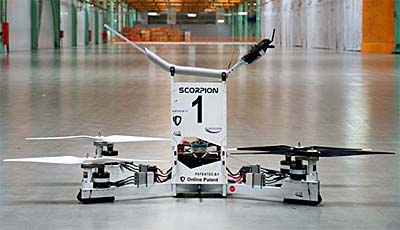 If you want to read more about the company's view of Scorpion,
If you want to read more about the company's view of Scorpion, 
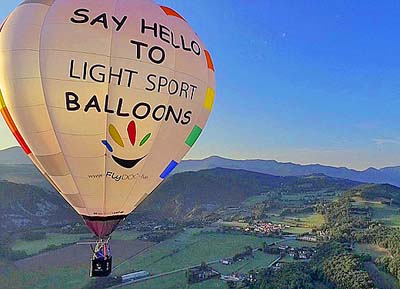 FAA's Light-Sport Aircraft category involves quite the intriguing mixture of aircraft. Fixed wing aircraft of many descriptions, weight shift, powered parachute, gyroplanes, motorgliders, seaplanes, of course, and, lighter-than-air.
FAA's Light-Sport Aircraft category involves quite the intriguing mixture of aircraft. Fixed wing aircraft of many descriptions, weight shift, powered parachute, gyroplanes, motorgliders, seaplanes, of course, and, lighter-than-air.  Leandro observes that established balloon manufacturers are accustomed to working in the FAA or CAA certified aircraft environment, often building large balloons used commercially to give rides. These producers have smaller aircraft but evidently pursue the higher cost variations. They may not be familiar with ASTM standards as used for all Light-Sport Aircraft and no others have chosen to address the LSA market.
Leandro observes that established balloon manufacturers are accustomed to working in the FAA or CAA certified aircraft environment, often building large balloons used commercially to give rides. These producers have smaller aircraft but evidently pursue the higher cost variations. They may not be familiar with ASTM standards as used for all Light-Sport Aircraft and no others have chosen to address the LSA market.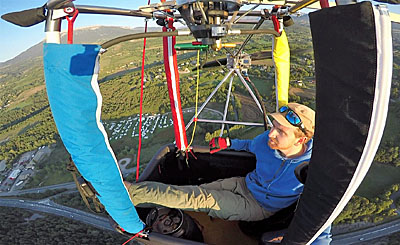
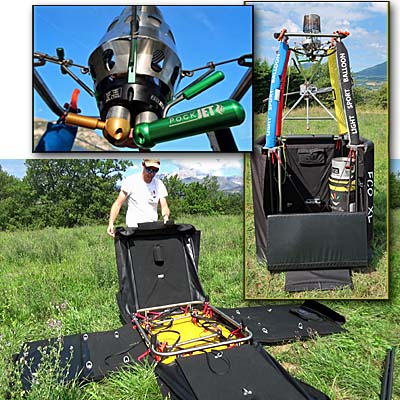 Because no prior company has offered an aircraft using those standards, it seems likely FAA will want to audit this first LTA entry. Until passing muster with FAA, FlyDoo can be made available as an Experimental-Amateur Built.
Because no prior company has offered an aircraft using those standards, it seems likely FAA will want to audit this first LTA entry. Until passing muster with FAA, FlyDoo can be made available as an Experimental-Amateur Built.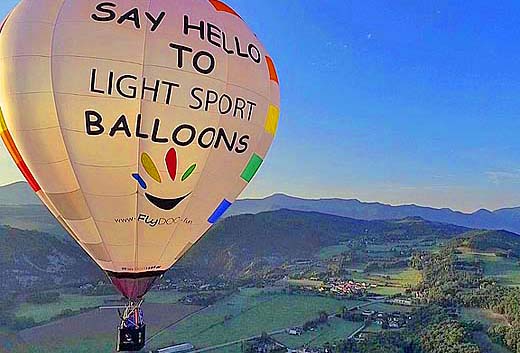
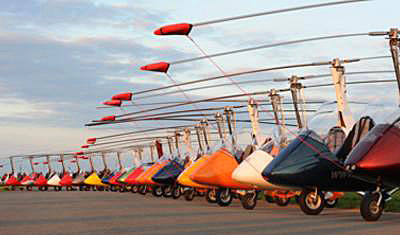 Over many years, you have found
Over many years, you have found 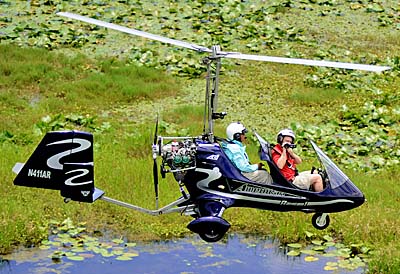
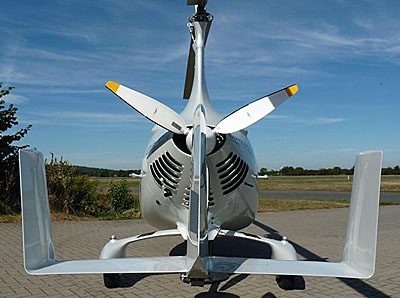 Our new associate, Steve Beste, wrote an excellent article for his club newsletter and I will summarize that piece in another post.
In his article, he wrote, "[Along with better training] the other change since those days is the large horizontal stabilizer, mounted well aft. Some machines were prone to PIO, pilot-induced oscillations in pitch. The pilot would chase the oscillations, only making them worse until the gyro did a fatal bunt over. The large tail that Magni invented – as is used on all modern gyros – has fixed that."
Our new associate, Steve Beste, wrote an excellent article for his club newsletter and I will summarize that piece in another post.
In his article, he wrote, "[Along with better training] the other change since those days is the large horizontal stabilizer, mounted well aft. Some machines were prone to PIO, pilot-induced oscillations in pitch. The pilot would chase the oscillations, only making them worse until the gyro did a fatal bunt over. The large tail that Magni invented – as is used on all modern gyros – has fixed that."
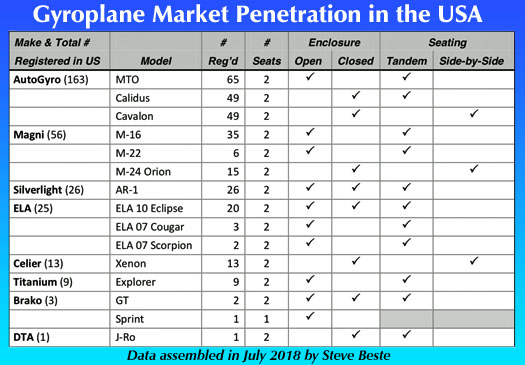 As you can see,
As you can see, 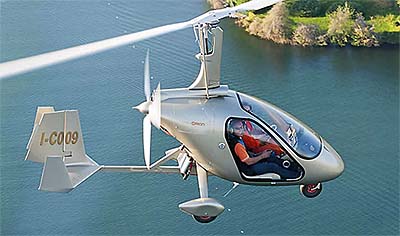
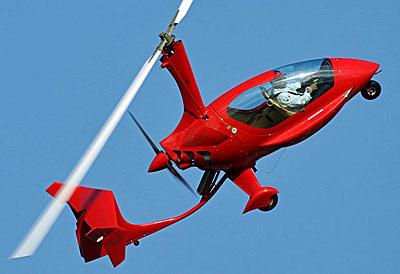
 "[However, FAA's] data is not clean," Steve observed. I am well aware of this problem. Uncertainty about data accuracy of "alternative" LSA is why we have reported fixed wing Special LSA, only offering guesses for weight shift trikes, powered parachutes, gyroplanes, motorgliders, and more.
However, we hope that will now change and our market share reporting will be more inclusive. Hurray!
"[However, FAA's] data is not clean," Steve observed. I am well aware of this problem. Uncertainty about data accuracy of "alternative" LSA is why we have reported fixed wing Special LSA, only offering guesses for weight shift trikes, powered parachutes, gyroplanes, motorgliders, and more.
However, we hope that will now change and our market share reporting will be more inclusive. Hurray!
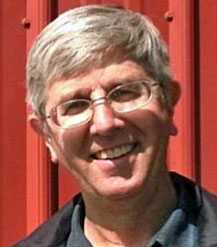 Problems in FAA's database is not caused by incompetent clerks. Agency personnel must sort through inconsistently-reported aircraft. If, as Steve pointed out in one example, the registered name of the aircraft is slightly different, it won't show up on a casual investigation.
He added, "There's no end of that kind of thing …just so we know the limitations on this exercise. But with that understanding, I love this kind of thing, I have the skills to do it, and would be honored to support your good work for the sport." All such reporting will be available on the home page when fresh and catalogued on its own space found by
Problems in FAA's database is not caused by incompetent clerks. Agency personnel must sort through inconsistently-reported aircraft. If, as Steve pointed out in one example, the registered name of the aircraft is slightly different, it won't show up on a casual investigation.
He added, "There's no end of that kind of thing …just so we know the limitations on this exercise. But with that understanding, I love this kind of thing, I have the skills to do it, and would be honored to support your good work for the sport." All such reporting will be available on the home page when fresh and catalogued on its own space found by 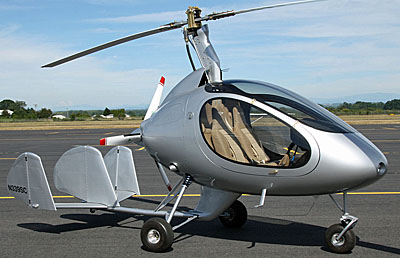 Chuck's son Jim Vanek took over the business and revamped the Vancraft designs. He said his "award-winning, world’s-first, two-place gyroplane took the prestigious Charles Lindbergh award at the Oshkosh airshow in 1985." The company also reports his Sport Copter II design was voted as one of the Top Ten Best Designs at AirVenture in 2011.
An airshow performer, Jim said he wrote the parameters and guidelines for gyroplane looping for the FAA in 1998 after performing the world’s first loop in a conventional gyroplane, in 1997. The company's website reports, "He is the only gyro pilot in the world that holds an International Council of Air Shows card for gyroplane looping and rolling." Don't even think about trying this yourself, however.
Chuck's son Jim Vanek took over the business and revamped the Vancraft designs. He said his "award-winning, world’s-first, two-place gyroplane took the prestigious Charles Lindbergh award at the Oshkosh airshow in 1985." The company also reports his Sport Copter II design was voted as one of the Top Ten Best Designs at AirVenture in 2011.
An airshow performer, Jim said he wrote the parameters and guidelines for gyroplane looping for the FAA in 1998 after performing the world’s first loop in a conventional gyroplane, in 1997. The company's website reports, "He is the only gyro pilot in the world that holds an International Council of Air Shows card for gyroplane looping and rolling." Don't even think about trying this yourself, however.
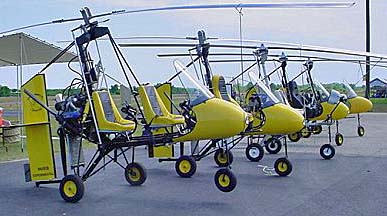 The company said, "We offer 22 thru 28 foot rotor blades of our own design with a lift capability from ultralight thru 1,200 pounds gross weight." They added, "We are the only manufacturer that test flies all blade sets prior to shipping." For export, Rotor Flight will fully build their aircraft but in the USA, FAA will only permit them to deliver kits, the same as all gyroplane producers.
As with all the modern gyroplanes, Rotor Flight uses a substantial tailplane. "The Dominator [series of one and two-place machines] incorporate the Tall Tail design for stability." Asked how their product differs, the company's website states, "What makes the Dominator so unique is its high profile design. It sits up very high off the ground."
The company said, "We offer 22 thru 28 foot rotor blades of our own design with a lift capability from ultralight thru 1,200 pounds gross weight." They added, "We are the only manufacturer that test flies all blade sets prior to shipping." For export, Rotor Flight will fully build their aircraft but in the USA, FAA will only permit them to deliver kits, the same as all gyroplane producers.
As with all the modern gyroplanes, Rotor Flight uses a substantial tailplane. "The Dominator [series of one and two-place machines] incorporate the Tall Tail design for stability." Asked how their product differs, the company's website states, "What makes the Dominator so unique is its high profile design. It sits up very high off the ground."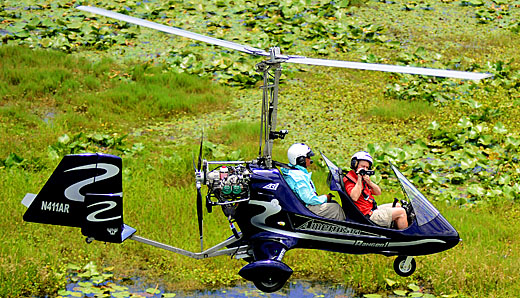
 LSA seaplanes have provided some of the most interesting new developments in aviation. Perhaps interest stems from the vast numbers of landable waterways compared to runways. Perhaps it's the versatility of amphibians. Maybe people are simple drawn by the good looks or unique qualities of entries.
Among the several projects, one of the most fascinating has been the hybrid electric seaplane called Equator P2 Xcursion, from Norway. I have reported on P2 Xcursion before;
LSA seaplanes have provided some of the most interesting new developments in aviation. Perhaps interest stems from the vast numbers of landable waterways compared to runways. Perhaps it's the versatility of amphibians. Maybe people are simple drawn by the good looks or unique qualities of entries.
Among the several projects, one of the most fascinating has been the hybrid electric seaplane called Equator P2 Xcursion, from Norway. I have reported on P2 Xcursion before; 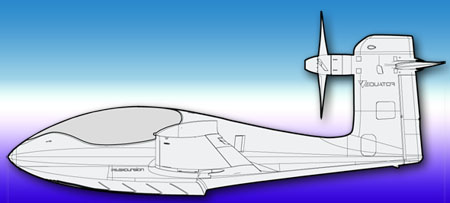 Part of the innovation Tomas introduced is a novel hybrid propulsion system to provide range, fuel efficiency and redundancy with all the benefits of electric power. With a purpose-designed control management system, the total pilot workload is reduced and higher levels of security are achieved, he believes.
Part of the innovation Tomas introduced is a novel hybrid propulsion system to provide range, fuel efficiency and redundancy with all the benefits of electric power. With a purpose-designed control management system, the total pilot workload is reduced and higher levels of security are achieved, he believes.
 Further innovation is a fly-by-wire rudder and drive-by-wire nosewheel. "Both are experimental technologies, Tomas explained, "that we believe may make it simpler for the prospective owner and pilot to learn how to fly. No more hand and foot coordination, here you can put your feet up high and use your hands only for all control inputs."
Further innovation is a fly-by-wire rudder and drive-by-wire nosewheel. "Both are experimental technologies, Tomas explained, "that we believe may make it simpler for the prospective owner and pilot to learn how to fly. No more hand and foot coordination, here you can put your feet up high and use your hands only for all control inputs."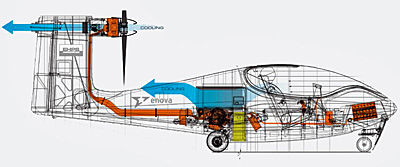 P2 Xcursion's thrust is provided by an unusual aviation powerplant involving three elements: a motor spinning the prop; an electric generator supplying the motor and batteries; and an internal combustion engine powering the generator. At this time, P2 has both a test and boost battery plus it has the required electronic control unit (ECU).
P2 Xcursion's thrust is provided by an unusual aviation powerplant involving three elements: a motor spinning the prop; an electric generator supplying the motor and batteries; and an internal combustion engine powering the generator. At this time, P2 has both a test and boost battery plus it has the required electronic control unit (ECU).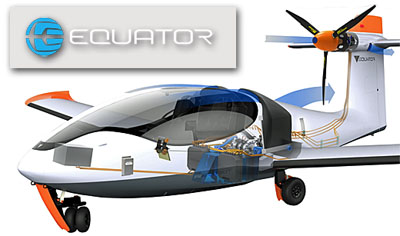
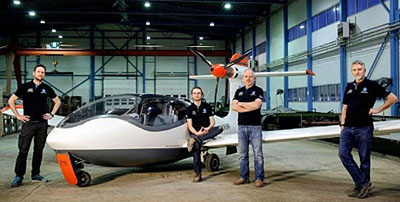 As a sum, the three elements weigh 233 pounds, roughly the weight of a legacy 100 horsepower aviation powerplant.
Batteries and controllers add to the weight, perhaps explaining the gross weight of 750 kilograms or 1,653 pounds. This weight and electric propulsion would eliminate P2 Xcursion except FAA is presently considering both electric power and a different way to calculate gross weight that would disregard the current 1,430 pound (650 kg) LSA seaplane weight limit. See more on
As a sum, the three elements weigh 233 pounds, roughly the weight of a legacy 100 horsepower aviation powerplant.
Batteries and controllers add to the weight, perhaps explaining the gross weight of 750 kilograms or 1,653 pounds. This weight and electric propulsion would eliminate P2 Xcursion except FAA is presently considering both electric power and a different way to calculate gross weight that would disregard the current 1,430 pound (650 kg) LSA seaplane weight limit. See more on 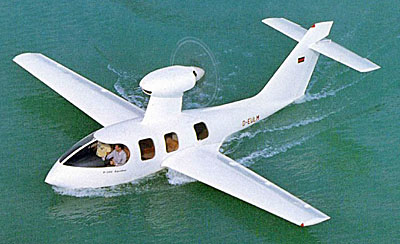 Many years later, Equator's P2 Xcursion first took flight in spring of 2018.
That accomplishment, while no doubt immensely satisfying, opened the next chapter: raising the money to go forward with the project.
"We are delighted and very proud to announce that Equator Aircraft AS has successfully achieved its Seedrs crowdfunding initial target investment," the company wrote. "The Equator team expresses a huge thank you to nearly 400 investors who share Equator's vision and have committed almost €160,000 (about $185,000) to date." While a tiny fraction of what Icon Aircraft has generated, this sum will evidently allow Tomas and team to proceed. You can help if you are so motivated using
Many years later, Equator's P2 Xcursion first took flight in spring of 2018.
That accomplishment, while no doubt immensely satisfying, opened the next chapter: raising the money to go forward with the project.
"We are delighted and very proud to announce that Equator Aircraft AS has successfully achieved its Seedrs crowdfunding initial target investment," the company wrote. "The Equator team expresses a huge thank you to nearly 400 investors who share Equator's vision and have committed almost €160,000 (about $185,000) to date." While a tiny fraction of what Icon Aircraft has generated, this sum will evidently allow Tomas and team to proceed. You can help if you are so motivated using 
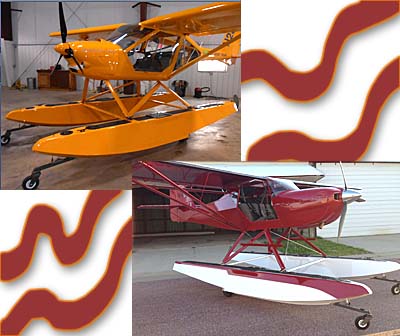 Recently, seaplane enthusiast and businessman Paul Richards informed us of a move for a leading producer of floats for light aviation: Clamar.
Paul wrote, "
Recently, seaplane enthusiast and businessman Paul Richards informed us of a move for a leading producer of floats for light aviation: Clamar.
Paul wrote, "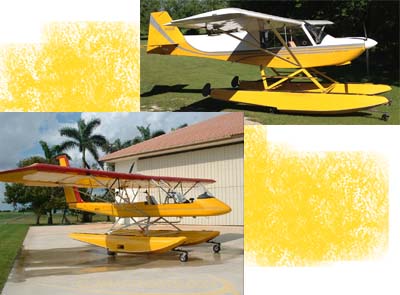 "Clamar’s new manufacturing facility will leverage a recently commissioned, advanced composites manufacturing center which includes an environmentally controlled layup room, high temperature processing oven, paint booth and advanced machining suite," said Paul.
“I’ve been fascinated by water flying my entire life,” said Clair Sceli. ”I’ve been flying for over 50 years and for the past 20 focused on designing and building the best composite floats in the world. It is gratifying to see my products on 28 different airframes and the Clamar brand has been so widely accepted that my current facility was bursting at the seams trying to keep up."
Clair continued his explation, "Undertaking a capital expansion at my stage of life seemed like the wrong decision so I sought out people who could support my customers from a world class facility and was fortunate to partner with Paul Richards and the folks in Brunswick, Maine.” Clamar's product line ranges from LSA (the 1400 series was designed for the Flight Design CTLS) to a 3500 class for heavier aircraft.
"Clamar’s new manufacturing facility will leverage a recently commissioned, advanced composites manufacturing center which includes an environmentally controlled layup room, high temperature processing oven, paint booth and advanced machining suite," said Paul.
“I’ve been fascinated by water flying my entire life,” said Clair Sceli. ”I’ve been flying for over 50 years and for the past 20 focused on designing and building the best composite floats in the world. It is gratifying to see my products on 28 different airframes and the Clamar brand has been so widely accepted that my current facility was bursting at the seams trying to keep up."
Clair continued his explation, "Undertaking a capital expansion at my stage of life seemed like the wrong decision so I sought out people who could support my customers from a world class facility and was fortunate to partner with Paul Richards and the folks in Brunswick, Maine.” Clamar's product line ranges from LSA (the 1400 series was designed for the Flight Design CTLS) to a 3500 class for heavier aircraft.

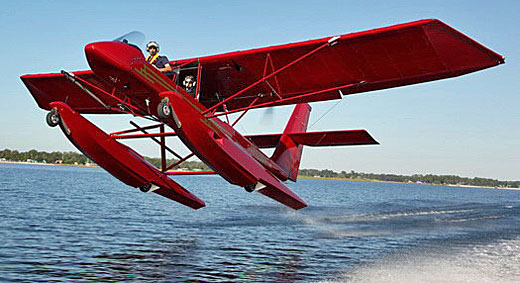
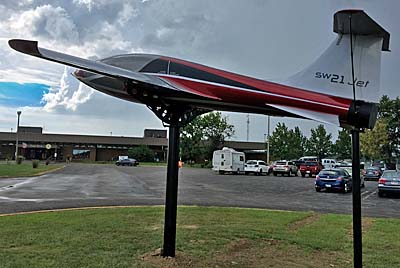 This article was
This article was 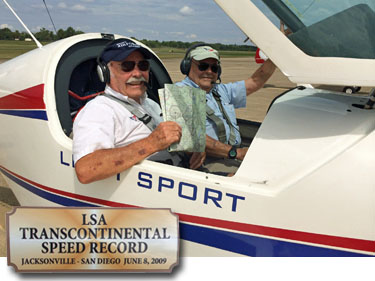
 Vendors in attendance logged steady demo flights to prospective customers.
Vendors in attendance logged steady demo flights to prospective customers. 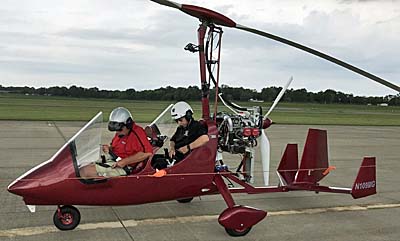
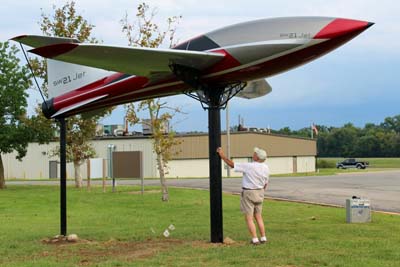 Airport manager Chris Collins forwarded more photos of the ceremony dedicating the SW21 Jet to the Mt. Vernon airport. Of the one with Jon Hansen reverently touching the main support for the aircraft he donated to the airport, Chris said, "I love this shot!"
Airport manager Chris Collins forwarded more photos of the ceremony dedicating the SW21 Jet to the Mt. Vernon airport. Of the one with Jon Hansen reverently touching the main support for the aircraft he donated to the airport, Chris said, "I love this shot!"
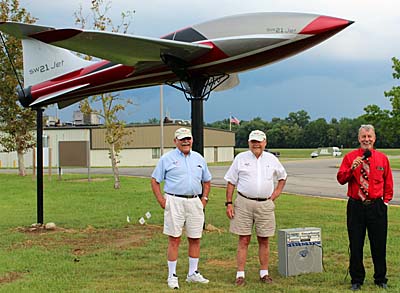 In the lower image, Chris identified all the parties that helped make this unusual light aircraft display possible.
In the lower image, Chris identified all the parties that helped make this unusual light aircraft display possible.
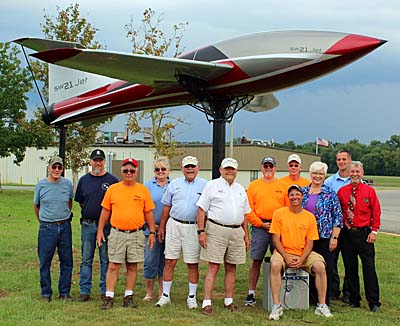
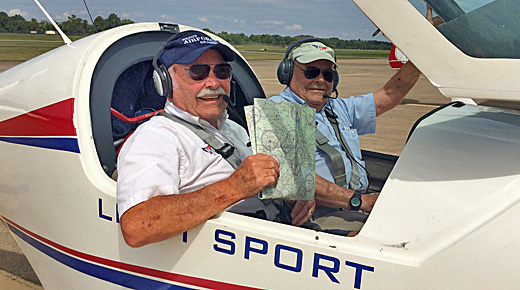
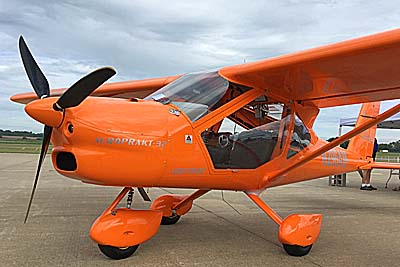 Many pilots expect the first appearance of a new model at the biggest airshows, but here's one of those times when the sector-specific shows win. It's all about timing and the new Aeroprakt A32 just won it's SLSA approval (#147 on our
Many pilots expect the first appearance of a new model at the biggest airshows, but here's one of those times when the sector-specific shows win. It's all about timing and the new Aeroprakt A32 just won it's SLSA approval (#147 on our 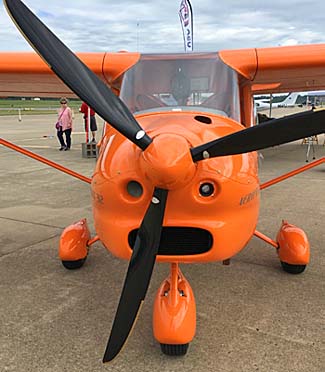 First blush: This is a great flying airplane, reflecting Aeroprakt's experience producing more than 1,000 of the predecessor
First blush: This is a great flying airplane, reflecting Aeroprakt's experience producing more than 1,000 of the predecessor 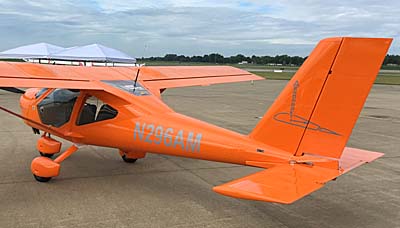 When deploying or retracting flaps, the pitch change is very minor. True, two notches is only 20° of flaps but deploying them made quite an aerodynamic change, just not a pitch change. On one landing I made with no flaps, I had to raise the nose significantly high to put A32 on the ground.
A32 uses a full flying stabilator, a change from A22 and it was more responsive than the former. It will take a bit longer to get used to but it is a powerful surface. On takeoff, importer Dennis Long demonstrated how immediate the stabilator will lift the nose off the ground. In fact, that's his preferred takeoff technique: power to full, almost immediately pull aft on the Y-stick, control the nose so it sits a few inches off the runway, and let A32 then fly herself into the air. I followed his method and it worked wonderfully well.
When deploying or retracting flaps, the pitch change is very minor. True, two notches is only 20° of flaps but deploying them made quite an aerodynamic change, just not a pitch change. On one landing I made with no flaps, I had to raise the nose significantly high to put A32 on the ground.
A32 uses a full flying stabilator, a change from A22 and it was more responsive than the former. It will take a bit longer to get used to but it is a powerful surface. On takeoff, importer Dennis Long demonstrated how immediate the stabilator will lift the nose off the ground. In fact, that's his preferred takeoff technique: power to full, almost immediately pull aft on the Y-stick, control the nose so it sits a few inches off the runway, and let A32 then fly herself into the air. I followed his method and it worked wonderfully well.
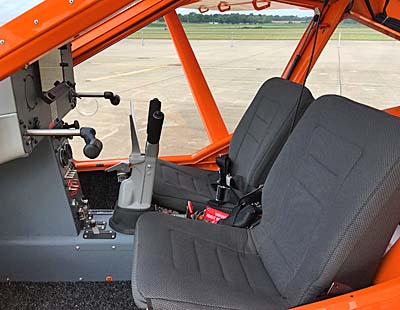 A32 uses the identical wing from A22 from the fuselage root out. However, the many clean-ups of the fuselage — and they are many, which you will see more fully in the Video Pilot Report to follow after editing — make the new model more efficient. A pilot literally has to work at getting it back on the ground …and that's a good thing.
I reduced power to 3000 rpm abeam my touchdown target and then began to retard speed, lowering one notch of flaps after we got in flap speed range (<93 mph). On base leg I had both notches in and was monitoring my speed carefully. Using 60-65 mph was fine on base turning final but I moved it to 55-60 on short final and was ideally at 50-55 over the numbers.
With two notches of flaps and with a modest headwind, A32 landed very short. You have excellent visibility on landing as you do in flight in A32 Vixxen. It lacks a skylight but otherwise offers a wide view all around. I could even watch as the main gear touched down (when Dennis was controlling the aircraft).
A32 uses the identical wing from A22 from the fuselage root out. However, the many clean-ups of the fuselage — and they are many, which you will see more fully in the Video Pilot Report to follow after editing — make the new model more efficient. A pilot literally has to work at getting it back on the ground …and that's a good thing.
I reduced power to 3000 rpm abeam my touchdown target and then began to retard speed, lowering one notch of flaps after we got in flap speed range (<93 mph). On base leg I had both notches in and was monitoring my speed carefully. Using 60-65 mph was fine on base turning final but I moved it to 55-60 on short final and was ideally at 50-55 over the numbers.
With two notches of flaps and with a modest headwind, A32 landed very short. You have excellent visibility on landing as you do in flight in A32 Vixxen. It lacks a skylight but otherwise offers a wide view all around. I could even watch as the main gear touched down (when Dennis was controlling the aircraft).
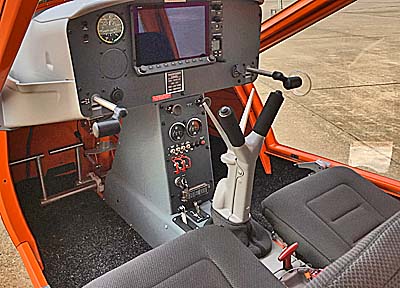 Takeoff and landing has been quoted at "under 100 meters" (300 feet) and I believe it. No question it was short, assuming, of course, decent technique.
A32 Vixxen was easy to fly with a joystick that provided enough feedback yet offered crisp response. In flight, I found the aircraft very well behaved and suitable for less experienced flyers, naturally assuming proper instruction and transition training.
In all, I think Aeroprakt has a winner. Dennis Long equipped this particular example with most available options, including the
Takeoff and landing has been quoted at "under 100 meters" (300 feet) and I believe it. No question it was short, assuming, of course, decent technique.
A32 Vixxen was easy to fly with a joystick that provided enough feedback yet offered crisp response. In flight, I found the aircraft very well behaved and suitable for less experienced flyers, naturally assuming proper instruction and transition training.
In all, I think Aeroprakt has a winner. Dennis Long equipped this particular example with most available options, including the 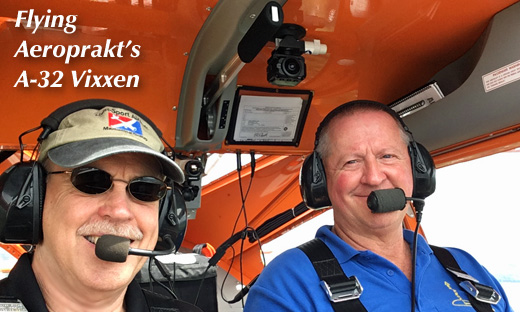
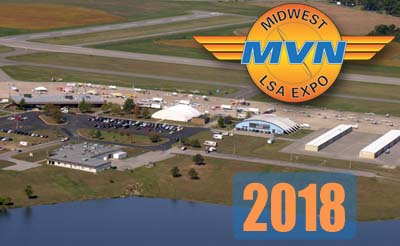 The biggest airshows in recreational aviation are history for 2018. I refer to
The biggest airshows in recreational aviation are history for 2018. I refer to 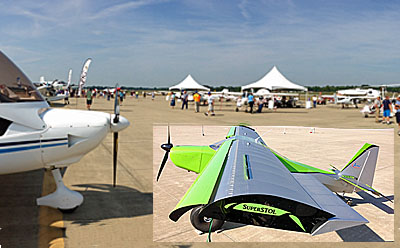 The sector specific shows are much smaller. That's a good thing.
Arguably, the most interesting shows are the smaller ones, those with more modest venues but where you can get more face time with company leaders or pilots. Not only can you have longer, more productive conversations but you can fly more aircraft. You can really ask a lot of questions as you make an aircraft purchase.
Plus, you won't wear out your sneakers with the long hikes of the big events.
The sector specific shows are much smaller. That's a good thing.
Arguably, the most interesting shows are the smaller ones, those with more modest venues but where you can get more face time with company leaders or pilots. Not only can you have longer, more productive conversations but you can fly more aircraft. You can really ask a lot of questions as you make an aircraft purchase.
Plus, you won't wear out your sneakers with the long hikes of the big events.
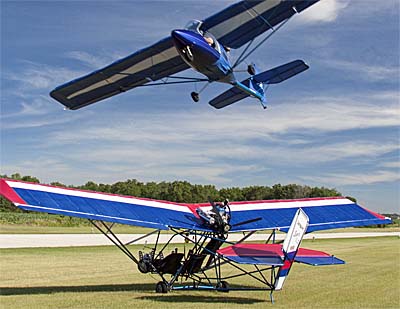
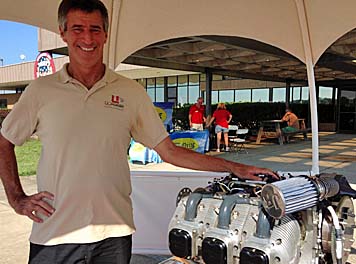
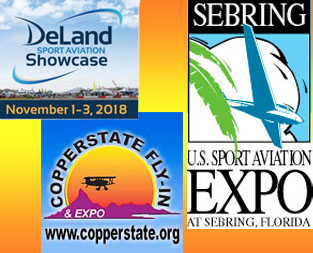 In between and up next:
In between and up next: 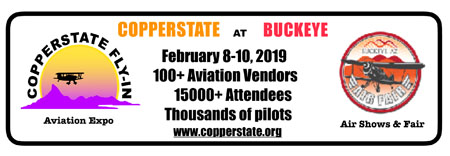 We start in September, pop up two months later in Florida, kick off the new year two months later in central Florida, and anticipate spring a month later in Arizona. In all, I'd call this an active schedule serving much of the recreational flying community. I'd hope you could make at least a couple of these if not all four.
If you do, wave when you see Dave and I whizzing about shooting video of all the coolest airplanes we can find. We'd love to see you on site — by all means, say "Hi!" — but if you can't make them all, we'll do our best to cover them.
Then, as spring really gets going, we return to Sun 'n Fun, followed by Aero and Oshkosh. What fun!
We start in September, pop up two months later in Florida, kick off the new year two months later in central Florida, and anticipate spring a month later in Arizona. In all, I'd call this an active schedule serving much of the recreational flying community. I'd hope you could make at least a couple of these if not all four.
If you do, wave when you see Dave and I whizzing about shooting video of all the coolest airplanes we can find. We'd love to see you on site — by all means, say "Hi!" — but if you can't make them all, we'll do our best to cover them.
Then, as spring really gets going, we return to Sun 'n Fun, followed by Aero and Oshkosh. What fun!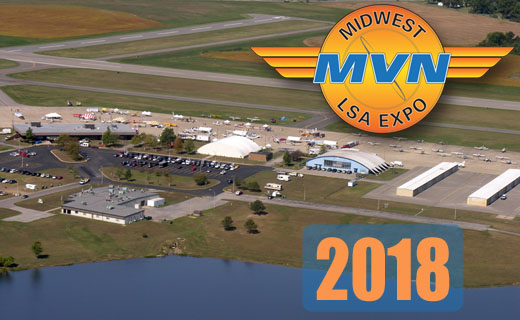
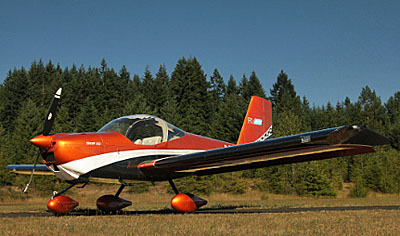 American producers were the kings of kits, an effort that calls for good assembly instructions and technical support plus groups that can help each other. These two activities represent night and day differences.
However, in the years since the regulation arrived, American companies have significantly caught up.
Indeed, as September and the 14th anniversary of the SP/LSA rule arrived, Van's released news of a major change.
"
American producers were the kings of kits, an effort that calls for good assembly instructions and technical support plus groups that can help each other. These two activities represent night and day differences.
However, in the years since the regulation arrived, American companies have significantly caught up.
Indeed, as September and the 14th anniversary of the SP/LSA rule arrived, Van's released news of a major change.
"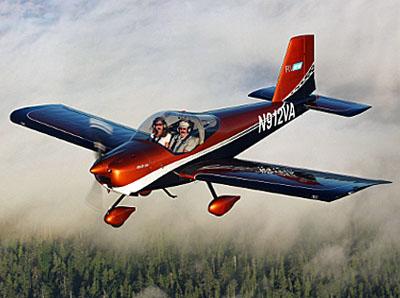 As many readers know, nearby Synergy Air was Van’s assembly partner for several years. "[They have] done a tremendous job for Van’s and our customers," stated Van's. Synergy Air will continue to work with Van's but will return to concentrate on builder-assist activities.
Van's issued a series of questions and answers to address this fairly significant change.
As many readers know, nearby Synergy Air was Van’s assembly partner for several years. "[They have] done a tremendous job for Van’s and our customers," stated Van's. Synergy Air will continue to work with Van's but will return to concentrate on builder-assist activities.
Van's issued a series of questions and answers to address this fairly significant change.
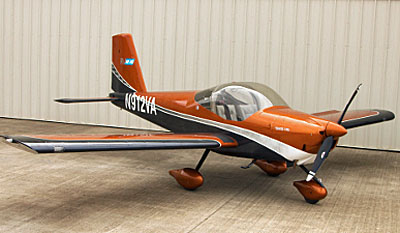 The natural evolution and success of both businesses has brought us to where we are today. Synergy has become even more focused on the business of assisting Van’s Aircraft’s customers in building their RV airplanes. As the SLSA program has matured, Van’s has expanded its workforce and capabilities to include marketing and aircraft construction. This change represents the next logical step in both companies’ successful business growth.
The natural evolution and success of both businesses has brought us to where we are today. Synergy has become even more focused on the business of assisting Van’s Aircraft’s customers in building their RV airplanes. As the SLSA program has matured, Van’s has expanded its workforce and capabilities to include marketing and aircraft construction. This change represents the next logical step in both companies’ successful business growth.
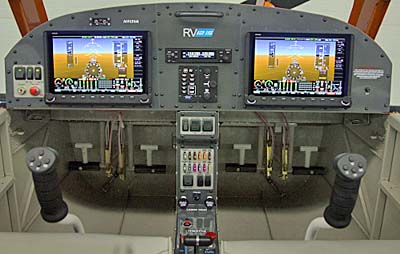 You can and should expect excellent quality from a business that continuously strives to improve its products and services. Van's approach is to delivering the highest quality products. Our aircraft assembly and delivery department — a dedicated team focused on just that portion of our business — is staffed by experts with years of RV-12 building experience. Van's will, as always, strive to adopt and leverage new, innovative processes and technology to drive its ongoing quality program.
You can and should expect excellent quality from a business that continuously strives to improve its products and services. Van's approach is to delivering the highest quality products. Our aircraft assembly and delivery department — a dedicated team focused on just that portion of our business — is staffed by experts with years of RV-12 building experience. Van's will, as always, strive to adopt and leverage new, innovative processes and technology to drive its ongoing quality program.
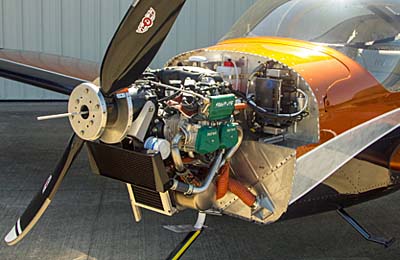 No, not at all. This change is the result of mutual successes, and represents a natural and positive evolution of both businesses. It will enable both companies to deliver even more, both in partnership and separately.
No, not at all. This change is the result of mutual successes, and represents a natural and positive evolution of both businesses. It will enable both companies to deliver even more, both in partnership and separately.
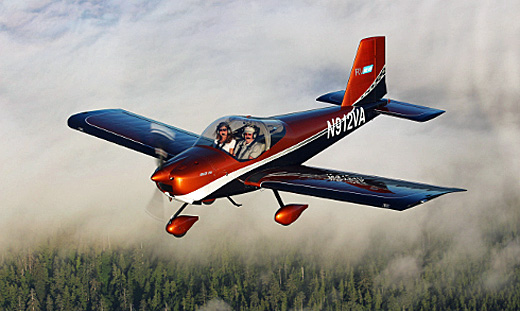
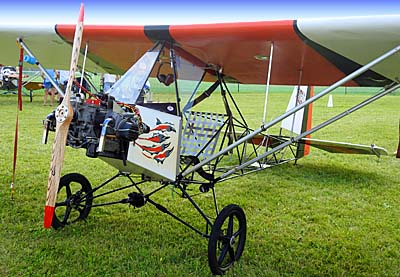 In this article, I am writing about one of most affordable aircraft you can build. Legal Eagle is not available either fully built or in a full kit.
A genuine, qualifying Part 103 ultralight vehicle, Legal Eagle ultralight weighs only 244 pounds. The three axis aircraft is designed around the four stroke half VW engine producing 30 horsepower, more than enough power for most applications.
A slightly enlarged version of the original, the Legal Eagle XL Ultralight can handle a 275 pound pilot yet has an empty weight of just 246 pounds …so it also makes the grade as an ultralight.
The original Legal Eagle limited the pilot weight to 225 pounds. Physically bigger pilots also needed a wider, taller seat plus more wing area and span was needed to carry the added pilot weight. A solution resulted in the XL design.
In this article, I am writing about one of most affordable aircraft you can build. Legal Eagle is not available either fully built or in a full kit.
A genuine, qualifying Part 103 ultralight vehicle, Legal Eagle ultralight weighs only 244 pounds. The three axis aircraft is designed around the four stroke half VW engine producing 30 horsepower, more than enough power for most applications.
A slightly enlarged version of the original, the Legal Eagle XL Ultralight can handle a 275 pound pilot yet has an empty weight of just 246 pounds …so it also makes the grade as an ultralight.
The original Legal Eagle limited the pilot weight to 225 pounds. Physically bigger pilots also needed a wider, taller seat plus more wing area and span was needed to carry the added pilot weight. A solution resulted in the XL design.
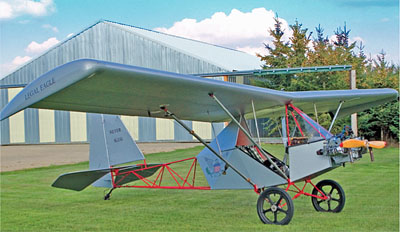
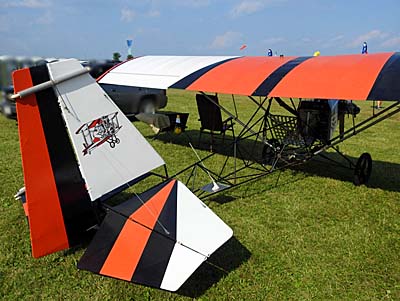 How low can the price go?
According to the company and its proprietor, Leonard Milholland, the cost to build a Legal Eagle is $3,000 to $5,000 …depending on your scrounging ability. "I have less than $500 hard cash in mine but I had the engine and most of the tubing, etcetera," said Leonard.
Will a kit be made available? "No," said Leonard, "that probably won't ever happen." He added, "The whole idea of this design is to keep it economical. You can afford it if you want to do the work."
If that isn't for you, well, you have many fine choices in fully built aircraft although you may be able to find a Legal Eagle somebody else built.
A simple machine, Legal Eagle is for pilots looking to have a little fun in the air on the most modest of budgets.
How low can the price go?
According to the company and its proprietor, Leonard Milholland, the cost to build a Legal Eagle is $3,000 to $5,000 …depending on your scrounging ability. "I have less than $500 hard cash in mine but I had the engine and most of the tubing, etcetera," said Leonard.
Will a kit be made available? "No," said Leonard, "that probably won't ever happen." He added, "The whole idea of this design is to keep it economical. You can afford it if you want to do the work."
If that isn't for you, well, you have many fine choices in fully built aircraft although you may be able to find a Legal Eagle somebody else built.
A simple machine, Legal Eagle is for pilots looking to have a little fun in the air on the most modest of budgets.
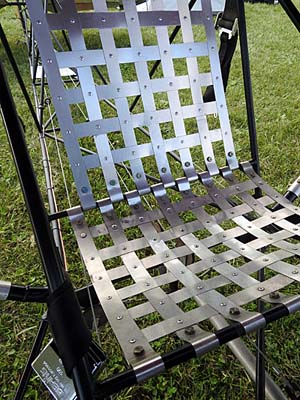 You buy a set of plans for $50 and invest six to nine months of your time. Other packages offer a series of videos and more details. Some builders will choose the welded fuselage and a materials kit though these will increase costs beyond the bare minimum.
Leonard reported, "I started [my company by supplying] the Better Half VW 2 Cylinder Engine conversion in about 1993, and so far have sold about 5,000 plans of this conversion. One unique feature is the fact that there is no need to cut that case!"
He added, "Somewhere between 450 and 600 of these engine conversions have been built and are flying today... including on dozens on flying Leagle Eagles.
You buy a set of plans for $50 and invest six to nine months of your time. Other packages offer a series of videos and more details. Some builders will choose the welded fuselage and a materials kit though these will increase costs beyond the bare minimum.
Leonard reported, "I started [my company by supplying] the Better Half VW 2 Cylinder Engine conversion in about 1993, and so far have sold about 5,000 plans of this conversion. One unique feature is the fact that there is no need to cut that case!"
He added, "Somewhere between 450 and 600 of these engine conversions have been built and are flying today... including on dozens on flying Leagle Eagles.
